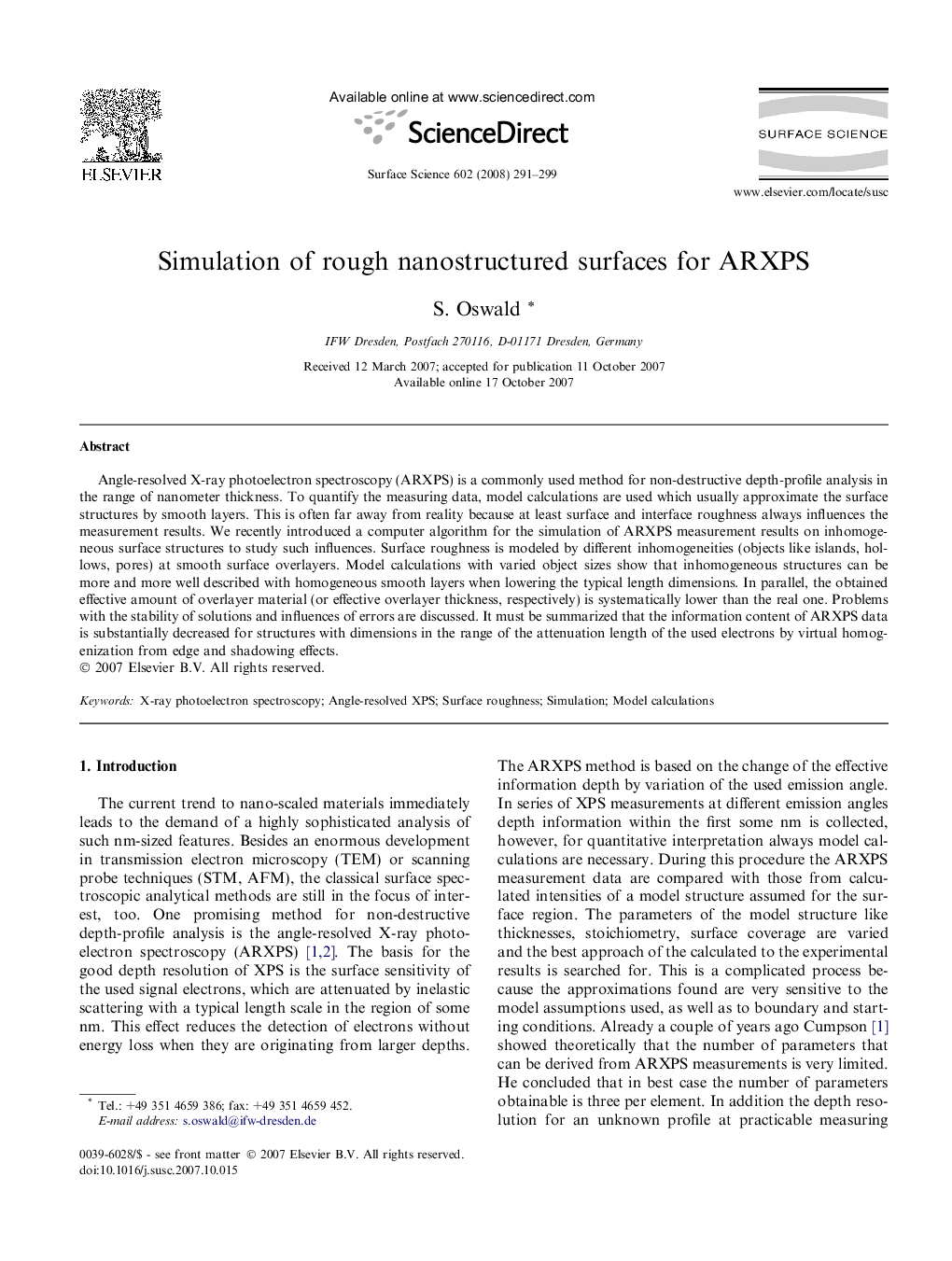| Article ID | Journal | Published Year | Pages | File Type |
|---|---|---|---|---|
| 5425372 | Surface Science | 2008 | 9 Pages |
Angle-resolved X-ray photoelectron spectroscopy (ARXPS) is a commonly used method for non-destructive depth-profile analysis in the range of nanometer thickness. To quantify the measuring data, model calculations are used which usually approximate the surface structures by smooth layers. This is often far away from reality because at least surface and interface roughness always influences the measurement results. We recently introduced a computer algorithm for the simulation of ARXPS measurement results on inhomogeneous surface structures to study such influences. Surface roughness is modeled by different inhomogeneities (objects like islands, hollows, pores) at smooth surface overlayers. Model calculations with varied object sizes show that inhomogeneous structures can be more and more well described with homogeneous smooth layers when lowering the typical length dimensions. In parallel, the obtained effective amount of overlayer material (or effective overlayer thickness, respectively) is systematically lower than the real one. Problems with the stability of solutions and influences of errors are discussed. It must be summarized that the information content of ARXPS data is substantially decreased for structures with dimensions in the range of the attenuation length of the used electrons by virtual homogenization from edge and shadowing effects.
